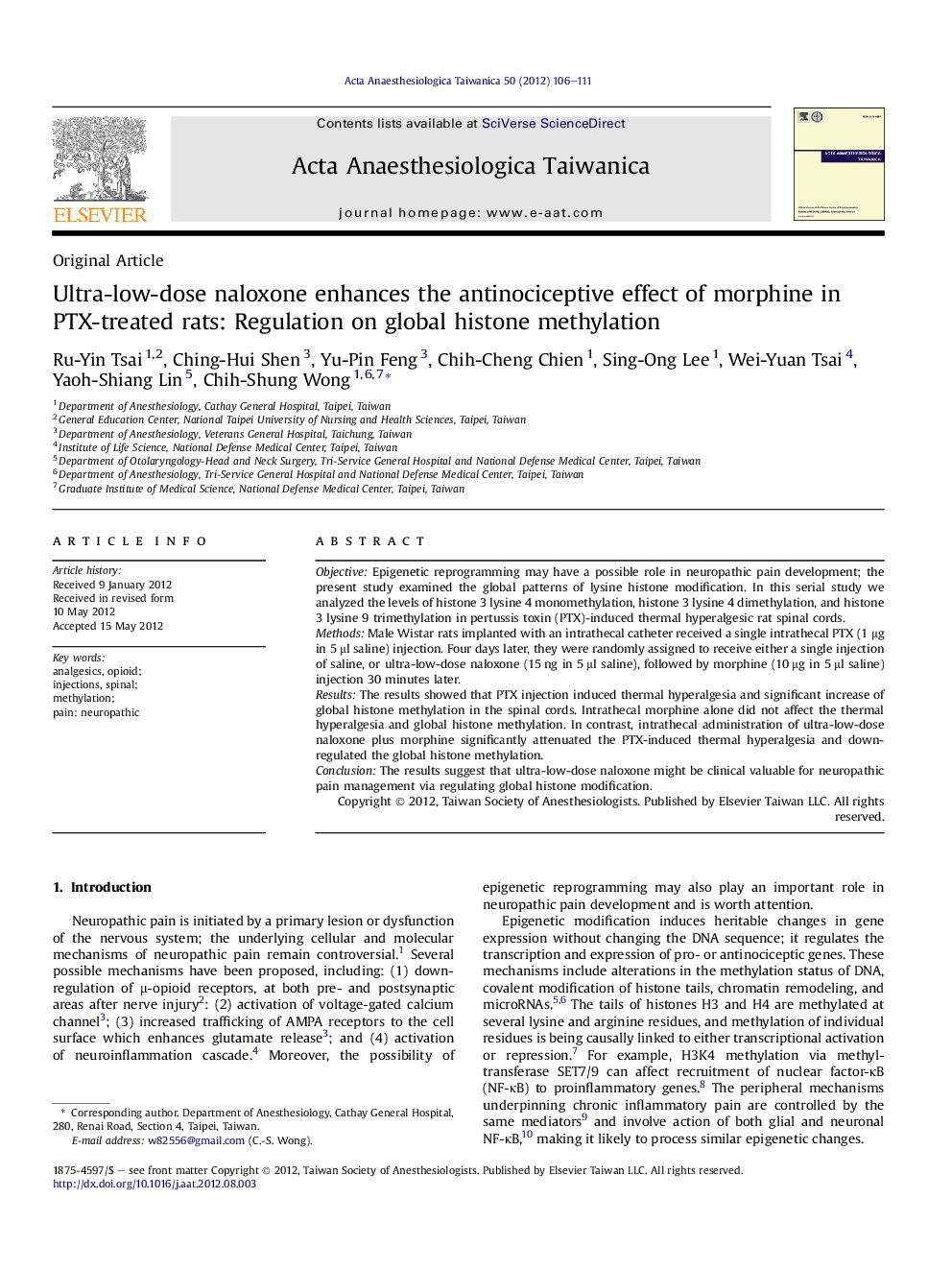| Article ID | Journal | Published Year | Pages | File Type |
|---|---|---|---|---|
| 2741500 | Acta Anaesthesiologica Taiwanica | 2012 | 6 Pages |
ObjectiveEpigenetic reprogramming may have a possible role in neuropathic pain development; the present study examined the global patterns of lysine histone modification. In this serial study we analyzed the levels of histone 3 lysine 4 monomethylation, histone 3 lysine 4 dimethylation, and histone 3 lysine 9 trimethylation in pertussis toxin (PTX)-induced thermal hyperalgesic rat spinal cords.MethodsMale Wistar rats implanted with an intrathecal catheter received a single intrathecal PTX (1 μg in 5 μl saline) injection. Four days later, they were randomly assigned to receive either a single injection of saline, or ultra-low-dose naloxone (15 ng in 5 μl saline), followed by morphine (10 μg in 5 μl saline) injection 30 minutes later.ResultsThe results showed that PTX injection induced thermal hyperalgesia and significant increase of global histone methylation in the spinal cords. Intrathecal morphine alone did not affect the thermal hyperalgesia and global histone methylation. In contrast, intrathecal administration of ultra-low-dose naloxone plus morphine significantly attenuated the PTX-induced thermal hyperalgesia and down-regulated the global histone methylation.ConclusionThe results suggest that ultra-low-dose naloxone might be clinical valuable for neuropathic pain management via regulating global histone modification.
